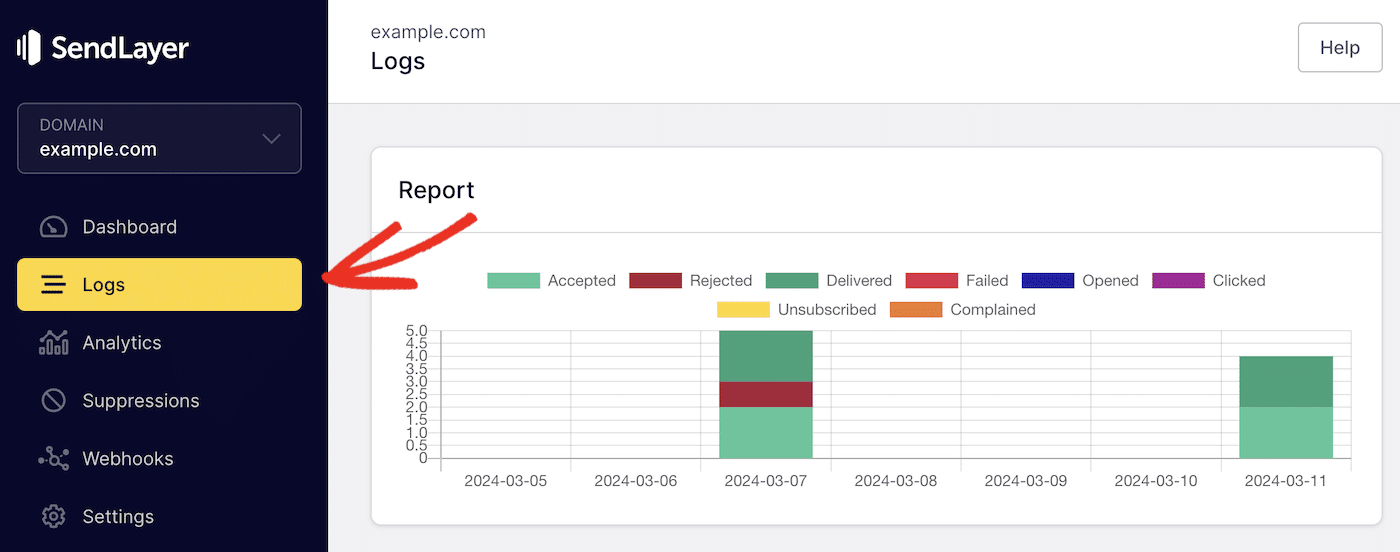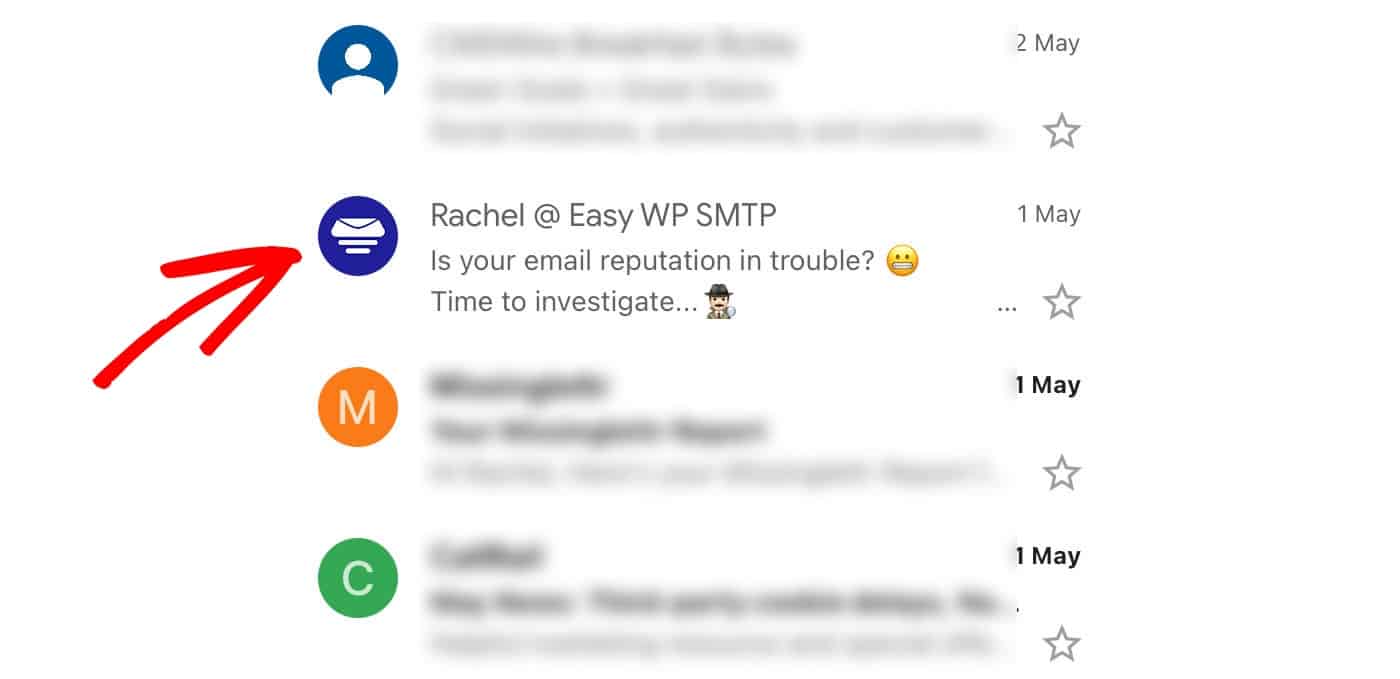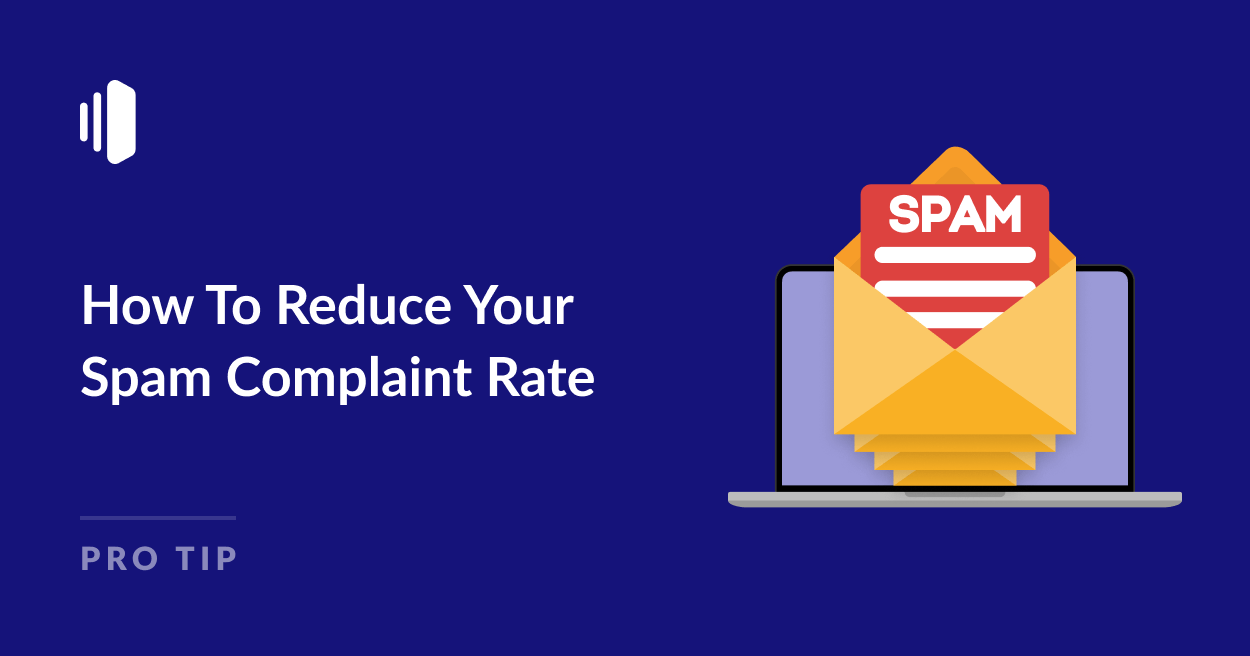A high number of spam complaints can spell disaster for your email deliverability.
Your spam complaint rate is one of the factors email service providers consider when they’re deciding what to do with your email.
If your spam complaint rate is above an acceptable level (even if every email you send is in good faith), it’s highly likely that your emails will be sent straight to the spam folder or not accepted at all.
So what can you do if you’re getting a few too many spam complaints? Keep reading for tips and ideas to reduce that all-important spam complaint rate.
How Is the Spam Complaint Rate Measured?
Your spam complaint rate is simply a measure of how many people have reported your emails as spam.
If you send out 100 emails, and 3 people report them as spam, you’ll end up with a spam complaint rate of 0.3
Checking Your Spam Complaint Rate
If you’re using an email provider like SendLayer, you can monitor the number of spam complaints you’re receiving in your email logs to keep an eye on this figure.

Likewise, most email marketing platforms report on spam complaint rate in your campaign analytics, so you can monitor and make adjustments to your strategy.
For bulk emailers (as a rule of thumb if you’re sending 500+ emails a day, you’re considered a bulk email) it’s best to use Google Postmaster Tools to keep a record of your spam complaint rate over time.
Why It’s Crucial to Keep Your Spam Complaint Rate Low
As a transactional email provider, SendLayer takes spam complaints seriously, and we automatically suspend a user’s account if they hit a certain spam threshold, as explained in our acceptable use policy. This is important fo us to maintain the reputation of our sender IPs
And ow Google and Yahoo have announced they’re taking a zero-tolerance stance against email senders who have a spam complaint rate of above 0.3, it’s all the more important to monitor this number and do everything you can to reduce it.
Why Do People Report Emails As Spam?
I know what you’re thinking: “But I’m not a spammer!” Unfortunately, it’s not that simple.
People may mark your email as spam because they don’t recongize the sender name, because they don’t like the look of the subject line, or simply because they’re too lazy to find the unsubscribe button.

While it’s close to impossible to maintain a spam complaint rate of zero (although we have heard of a couple of senders who have achieved this feat!) if you’re genuinely sending emails for the right reasons, you should be able to reduce your spam complaint rate by a point or two with a little work.
Spam Complaint Rate of Transactional Emails
Transactional emails are sent when a user triggers them by taking some kind of action such as signing up for an account, requesting a password reset, or placing an order.
In each of these cases, the user expects to receive an email, so (in theory) transactional email should never be marked as spam.
Of course in practice, this isn’t always the case. But oftentimes, the culprit is a poorly designed email.
Some factors that might trigger a transactional email being reported as spam include:
- Poor choice of sender name or a generic sending domain such as a Gmail address
- An unclear or offputting email subject line
- Email design that doesn’t match your branding
- Including offputting marketing messages in your transactional emails
- Emails that are received too long after the action that triggered them.
This final point is one that you may not have considered but it can contribute significantly to your spam complaint. For example, if a user signs up to your site but they don’t receive the email notification until hours later, there’s a good chance they’ve completely forgotten about it.
For this reason, it’s crucial to use a transactional email provider that you can trust for fast and reliable email delivery, like SendLayer.
General Tips for Avoiding Spam Reports
When it comes to marketing emails, all bets are off. Many users sign up for mailing lists and then tire of receiving the emails or simply forget they signed up to them in the first place.
It’s expected that marketing campaigns will receive a few spam complaints, but there’s still a lot you can do to keep that number low.
1. Get Explicit Permission to Send Email (+ Double Opt-in)
This is the most important step to take if you want to keep your spam complaint rate low.
Don’t send emails to people who don’t want them. It may seem like a good marketing trick to add people to your mailing list automatically when they sign up for an account or buy your product, but disengaged users can seriously harm your email reputation.
Instead, offer a subscription process where it’s clear what they’re signing up for and what they’ll get when they sign up.
Ideally, implement a double opt-in process where recipients must click a link in the first email you send to confirm they really want to be on your list. This can really help to cut down accidental sign-ups and keep your spam complaint low in the long run.

2. Make it Easy to Unsubscribe
Likewise, you should make it as easy as possible for a recipient to unsubscribe as soon as they’ve decided they don’t want to receive emails from you.
Include a clear unsubscribe link in evey email and ideally, use a list-unsubscribe header, which adds a quick-access unsubscribe link to your emails in the inbox.
Gmail now requires one-click unsubscribe links to be included in every bulk email, This means the user should need to click no more than one link or button when they hit the unsubscribe link in your email. Don’t complicate things by making them input a reason for unsubscribing or other annoying processes.
3. Brand Your Emails Carefully
Branding starts at the sender name. If a user doesn’t recognize the sender of an email, it can appear suspicious.
Using the first name of a person can give it a nice human touch but this can be confusing for recipients. Instead, it’s better to include your company name in some way such as From: Sarah at Company Name.
Sending an email from [email protected] or [email protected] looks unprofessional at best and sometimes, just downright spammy. Instead, make sure you’ve set up the proper email authentication so the From email matches your website domain.
Getting your logo to show in the inbox with BIMI authentication is another great way to brand your emails as they hit the inbox and make it less likely they’ll be sent to spam.

Finally, consider how your emails look when it comes to branding. Either stick to a plain template, or use colors that match your website and other marketing materials.
4. Clean Your List Regularly
Over time, some of your subscribers may lose interest in your emails or change their email address. This can decrease your engagement rates and increase your bounce rate and spam complaint rate, so it’s a good idea to check for inactive subscribers periodically and remove them from your list.
You can also send out rengagment campaigns explicitly asking users if they still want to keep reading your emails.
5. Maintain a Consistent Sending Frequency
If you send emails sporadically and the last time a subscriber heard from you was months ago, there’s a good chance they’ll have forgotten completely who you are.
Stick to a regular email schedule and maintain a frequency that’s right for your audience. This might be once a week or once a month, but try to get the balance between being memorable and not being annoying.
You should also let subscribers know how often they should expect to hear from you when they sign up to your email list.
6. Provide Valuable Content
Finally, and arguably most importantly, make sure you’re sending something that’s worth reading.
Always aim to provide value to your readers, whether thats through education, entertainment, inspiration, or opportunity. Keeping your subscribers engaged means they’re less likely to send you to the spam folder.
By following these general tips and best practices, you can significantly reduce the number of spam complaints you receive and maintain a healthy and engaged subscriber list.
That’s it! Now you know how to reduce your spam complaint rate.
Next, would you like to learn about the difference between different sending methods? Check out our tutorial on SMTP vs API for more information.
